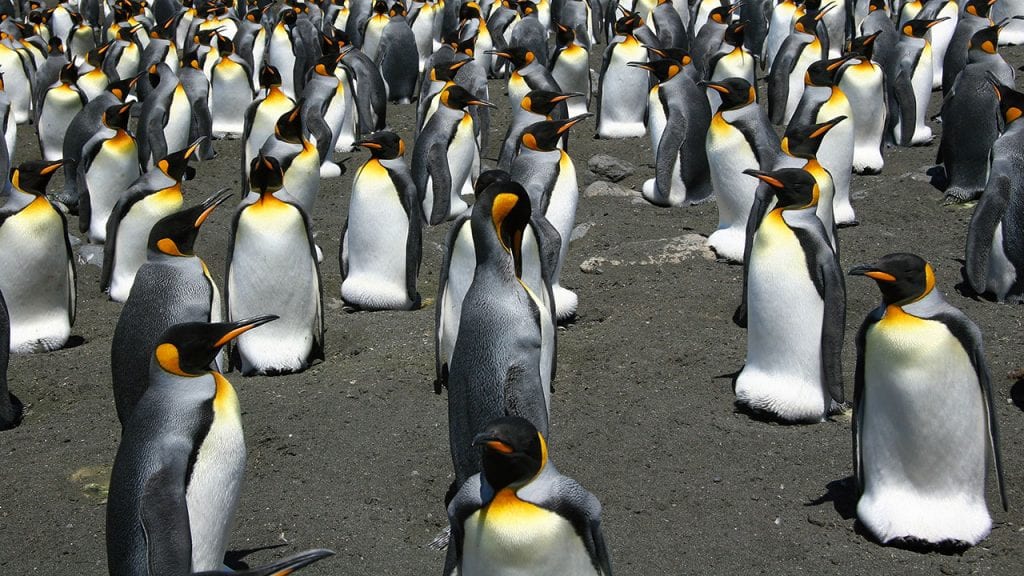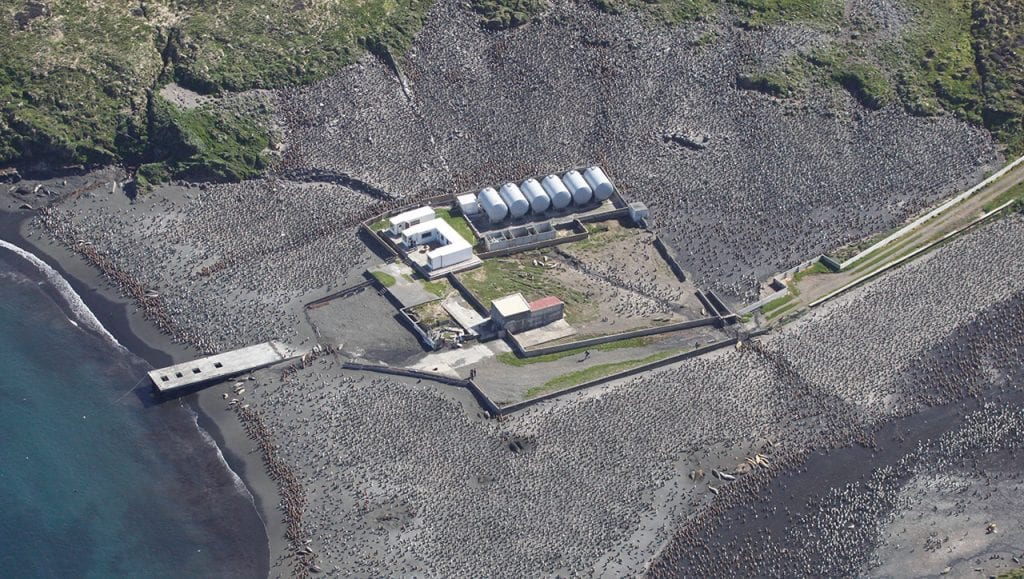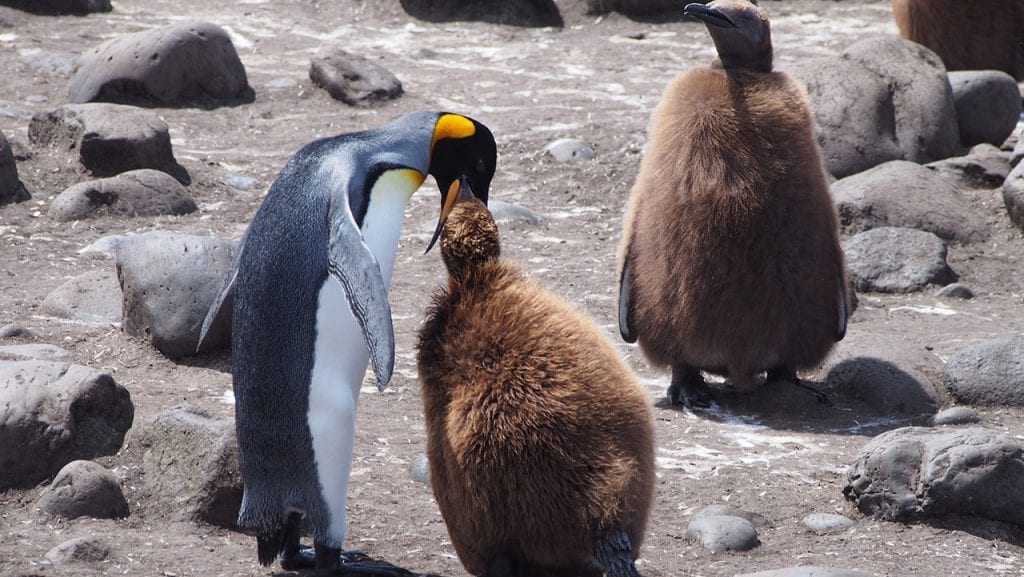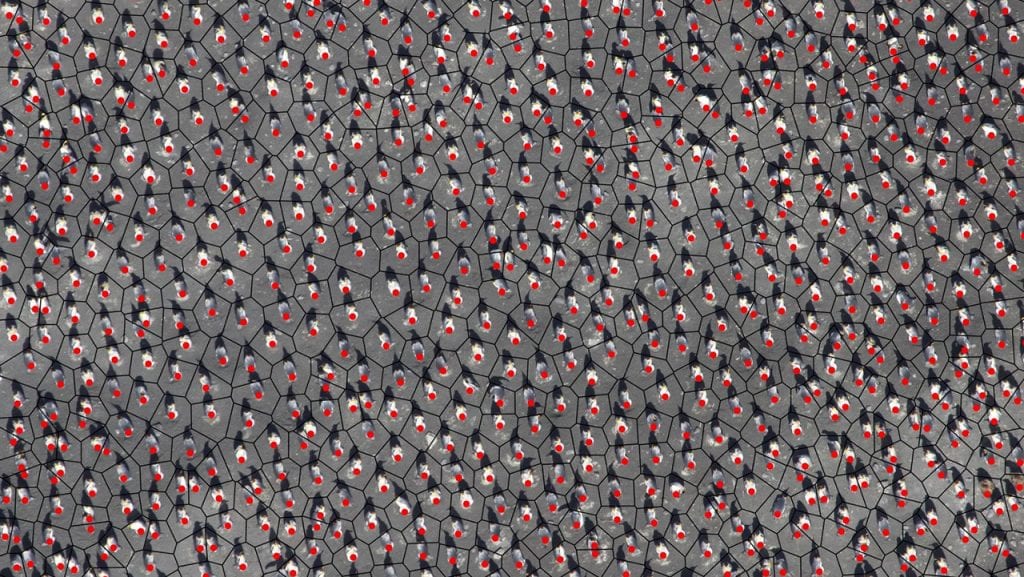Penguins Go Through the Flow
April 5, 2018
Colonies of breeding king penguins behave much like particles in liquids do, according to a new study by the Woods Hole Oceanographic Institution (WHOI) and international colleagues. This “liquid” organization and structure enables breeding colonies to protect themselves against predators while also keeping members together.
King penguins are threatened by climate change with warming temperatures shifting their main food sources farther south. The new information on how penguin colonies form and structure themselves—and how colonies may depend on the physical features of new breeding grounds—is crucial to predicting the species’ resilience.
“King penguin colonies are also of special interest because only they and emperor penguins do not build nests, and no one has previously examined the effect this has on their colonies,” says Richard Gerum, a Ph.D. student at the University of Erlangen-Nuernberg and lead author of the paper published April 4, 2018, in the Journal of Physics D.
Instead of building nests, king penguin pairs lay a single egg per breeding season, which the parents take turns incubating and protecting by carrying the egg on their feet. Breeding pairs and individuals form very large and dense colonies.
To investigate penguins’ colony structure, the research team used aerial photographs taken from a helicopter to record the positions of thousands of individual animals and breeding pairs over several years at two colonies on Crozet and Kerguelen islands. The images were then analysed using radial distribution function, a mathematical relationship that helps describe how the atoms pack around one another in solids, liquids, or gases.
The team ran computer simulations of the penguin breeding colonies’ movements and found that they resemble the movements of molecules in a 2D liquid, as they attract and repel one another in a constrained planar space.
“This liquid state is a compromise between density—or how compact the colony is—and flexibility, which allows the colony to adapt to both internal and external changes,” explains senior author Daniel Zitterbart, a physicist at WHOI and adjunct scientist at the University of Erlangen-Nuernberg. “For example, if a pair loses or abandons their egg, it leaves a vacancy in the colony, but we never see vacant spots in our aerial images. Presumably those are filled by penguins that had occupied a less preferred breeding spot.”
King penguins have a very long breeding cycle of more than 14 months, which leads to a constant mixture of early and late breeders. Zitterbart says the next step in the research is to develop methods to remotely assess the state of breeding colonies. Most colonies are remote and are rarely visited, and only few aerial pictures exist.
“This publication is a first comprehensive quantitative assessment of the structure and dynamics within king penguin colonies and a first step in developing higher-order colony descriptors, which eventually can help to remotely assess the species vulnerability,” Zitterbart says.
The research team also included colleagues from the CNRS/University of Strasbourg (IPHC/France), the CNRS/University of Montpellier (CEFE/France) and the Centre Scientifique de Monaco. The work was funded by the Institute Polaire Français Paul-Emile Victor (IPEV 137 and 354) and by the Deutsche Forschungsgemeinschaft.
The Woods Hole Oceanographic Institution is a private, non-profit organization on Cape Cod, Mass., dedicated to marine research, engineering, and higher education. Established in 1930 on a recommendation from the National Academy of Sciences, its primary mission is to understand the ocean and its interaction with the Earth as a whole, and to communicate a basic understanding of the ocean’s role in the changing global environment. For more information, please visit www.whoi.edu.




